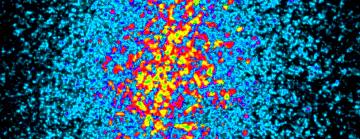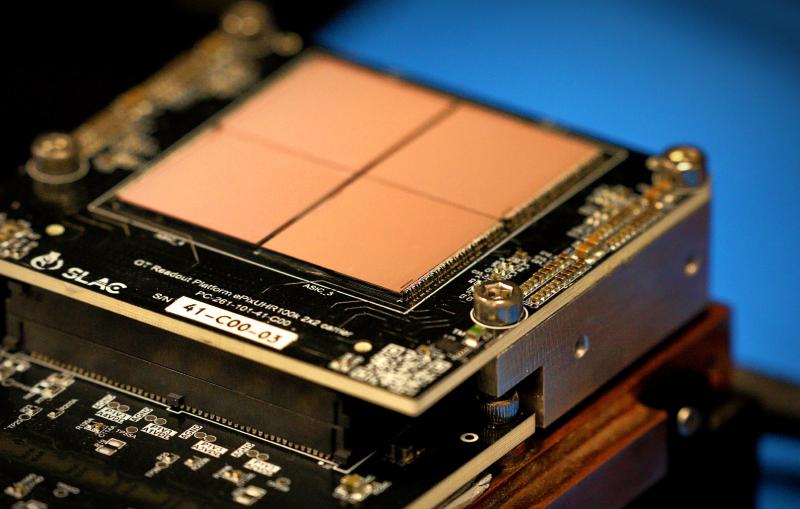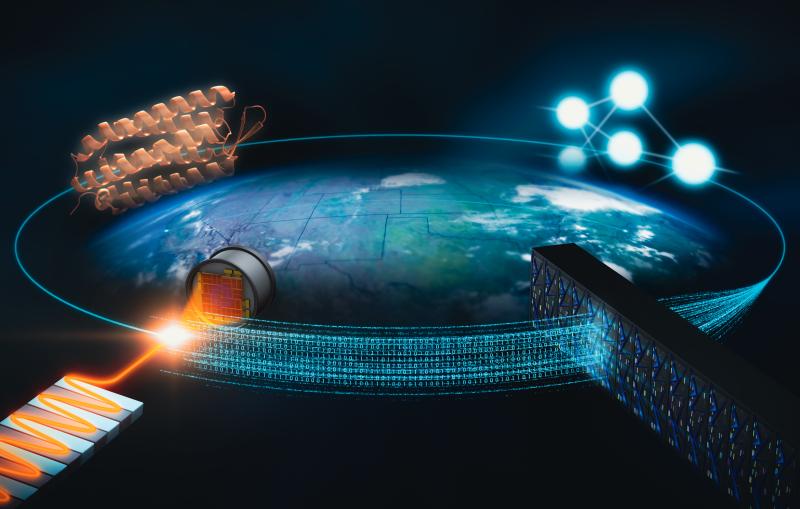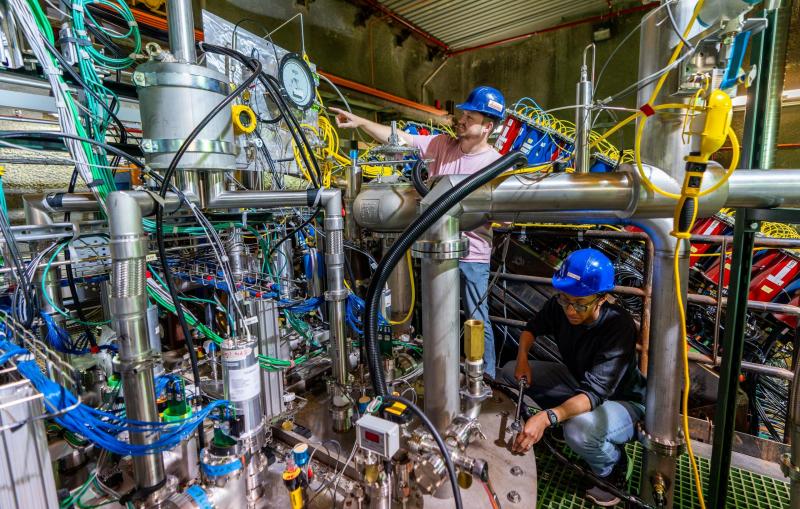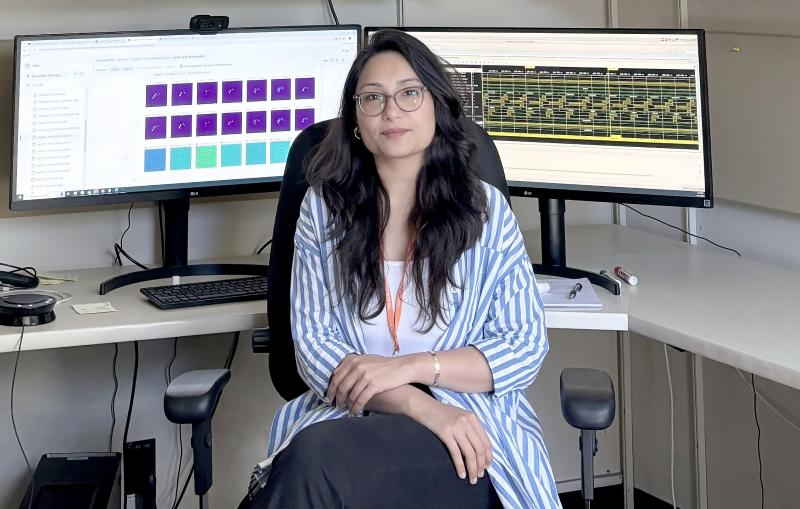Artificial intelligence deciphers detector "clouds" to accelerate materials research
A machine learning algorithm automatically extracts information to speed up – and extend – the study of materials with X-ray pulse pairs.
By Chris Patrick
X-rays can be used like a superfast, atomic-resolution camera, and if researchers shoot a pair of X-ray pulses just moments apart, they get atomic-resolution snapshots of a system at two points in time. Comparing these snapshots shows how a material fluctuates within a tiny fraction of a second, which could help scientists design future generations of super-fast computers, communications, and other technologies.
Resolving the information in these X-ray snapshots, however, is difficult and time intensive, so Joshua Turner, a lead scientist at the Department of Energy’s SLAC National Accelerator Center and Stanford University, and ten other researchers turned to artificial intelligence to automate the process. Their machine learning-aided method, published October 17 in Structural Dynamics, accelerates this X-ray probing technique, and extends it to previously inaccessible materials.
“The most exciting thing to me is that we can now access a different range of measurements, which we couldn't before,” Turner said.
Handling the blob
When studying materials using this two-pulse technique, the X-rays scatter off a material and are usually detected one photon at a time. A detector measures these scattered photons, which are used to produce a speckle pattern – a blotchy image that represents the precise configuration of the sample at one instant in time. Researchers compare the speckle patterns from each pair of pulses to calculate fluctuations in the sample.
“However, every photon creates an explosion of electrical charge on the detector,” Turner said. “If there are too many photons, these charge clouds merge together to create an unrecognizable blob.” This cloud of noise means the researchers must collect tons of scattering data to yield a clear understanding of the speckle pattern.
“You need a lot of data to work out what’s happening in the system,” said Sathya Chitturi, a Ph.D. student at Stanford University who led this work. He is advised by Turner and coauthor Mike Dunne, director of the Linac Coherent Light Source (LCLS) X-ray laser at SLAC.
With conventional methods, all of the data had to be collected first, then analyzed using models that estimate how the photons bunch together at the detector – a lengthy process to understand the speckle patterns.
The machine learning method, on the other hand, uses the raw detector image of scattered photons to directly extract fluctuation information. This new method is ten times faster on its own and 100 times faster when combined with improved hardware, allowing data analysis in closer to real time.
Part of the success of the new method came from the efforts of coauthor Nicolas Burdet, an associate staff scientist at SLAC who developed a simulator that produced data with which to train the machine learning model. Through this training, the algorithm was able to learn how the charge clouds merge, and untangle how many photons hit the detector per blob and per pulse pair. The model proved accurate even under very blobby conditions.
Seeing beyond the clouds
The model can extract information for a range of materials that have been difficult to study because X-rays scatter off them too weakly for detection, such as high-temperature superconductors or quantum spin liquids. Chitturi said the new method could also be applied to other, non-quantum materials, including colloids, alloys, and glasses.
Turner said the research should be a help for the LCLS-II upgrade, which will allow researchers to collect up to a million images, or a few terabytes of data, per second, compared to about a hundred images a second for LCLS.
“At SLAC we’re excited about this upgrade but have also been kind of worried if we can handle this amount of data,” Turner said. In a related paper, the team found that their new technique should be fast enough to deal with all that data. “This new algorithm will really help.”
The speed boost offered by artificial intelligence promises to also alter the experimental process itself. Instead of making decisions after data collection and analysis, researchers will be able to analyze data and make changes during data collection, which could save time and money spent during the experiment. It will also allow the researchers to spot surprises and redirect their experiments in real time to investigate unexpected phenomena.
“This method can let you explore more of the materials science you're interested in and maximize scientific impact by letting you make decisions at different points along your experiment about changes in experimental variables such as temperature, magnetic field, and material composition,” Chitturi said.
The study is part of a larger collaboration between SLAC, Northeastern University, and Howard University to use machine learning to advance materials and chemistry research.
The research was funded by the DOE Office of Science and the DOE Early Career Research Program. LCLS is a DOE Office of Science user facility.
Citation: Chitturi et al., Structural Dynamics, October 17, 2022 (10.1063/4.0000161)
Contact
For questions or comments, contact the SLAC Office of Communications at communications@slac.stanford.edu.
About SLAC
SLAC National Accelerator Laboratory explores how the universe works at the biggest, smallest and fastest scales and invents powerful tools used by researchers around the globe. As world leaders in ultrafast science and bold explorers of the physics of the universe, we forge new ground in understanding our origins and building a healthier and more sustainable future. Our discovery and innovation help develop new materials and chemical processes and open unprecedented views of the cosmos and life’s most delicate machinery. Building on more than 60 years of visionary research, we help shape the future by advancing areas such as quantum technology, scientific computing and the development of next-generation accelerators.
SLAC is operated by Stanford University for the U.S. Department of Energy’s Office of Science. The Office of Science is the single largest supporter of basic research in the physical sciences in the United States and is working to address some of the most pressing challenges of our time.
